How stainlesss steel sheet crops up in our daily lives.
“Because I like it!”
When I was at the University at the Faculty of Architecture there was a non-written rule: never justify a design choice saying “because I like it”, such an answer could have caused convulsions to the professor and assistants and for sure your proposal would have been badly rejected.
Now, I know, this could sound a bit too strict and none should never be inhibited on expressing freely what he likes, but at the time Architecture was believed to be an altruistic and selfless science with the power and the duty of answering human beings’ needs (oh.. we were such dreamers!) and with this commitment there was no space for personal taste.
To design an object in stainless steel (I would mention a saucepan again, as an example) one should be driven first of all by the awareness of its properties without denying of course the aesthetical value of this material.
Yes, I have to admit it: I have a weakness for stainless steel beyond its function.. I just like it! (I hope my old professors are not reading this) but if I want this shiny material to keep its stainless purity for long, then I have to be aware that there is stainless steel and stainless steel…
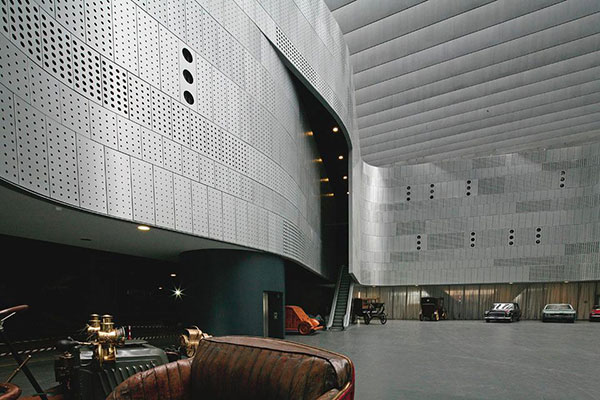
Perforated stainless steel cladding used for the interior of the Automobile Museum in Turin
Redesign and Photograph by Cino Zucchi
There is stainless and stainless steel
If you want to be sure that the shininess of the surface last for as long as possible you need to understand first what could potentially activate corrosion, and the causes for corrosion can be mainly searched within the following fields:
- Design purpose: Where and how you use the stainless steel – inside the building protected from the weather or outside exposed to the rain? For a piece of furniture or for external cladding? On the roof? For a bench or a sink? Each of these conditions exposes differently the material to corrosion.
- Environment: a higher level of pollution can increase the possibility of corrosion (rural, urban sites, industrial sites)
- Exposure to salt: the environment can contain high level of salt. The most common one is the proximity of a sea coast but it is not the only one.
- Weather conditions of the area: some areas with high level of humidity and high temperature can contain elements which are aggressive for stainless steel.
The evaluation of all these elements will help the expert to assign a total score which will be used to determine which grade of stainless steel is adequate to that specific use.
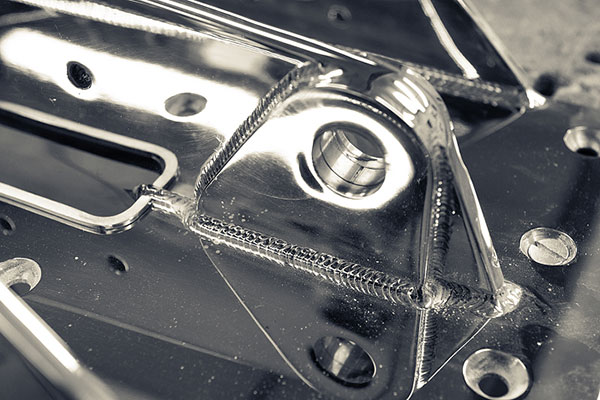
New stem head design fabricated by Fox’s Marina for Oyster Marine Ltd’s new 625/01 yacht.
Specify, specify, specify!
Once the type of stainless steel is properly chosen there is still a lot you can do to improve the behaviour of the material.
For exterior purposes, careful specification of the finishes to be applied to the surface is fundamental in order to determine the response to corrosion: if the surface is too rough this can facilitate the accumulation of corrosive elements; if the surface is smoother instead the pollution doesn’t find obstacles and cannot accumulate, plus a smoother surface is more easily cleanable.
The roughness of the surface should be always specified as ≤ 0.5 μm and the direction of the grain should be, when possible, vertical (so that the rain can more easily wash out the contaminants).
As a generic rule, when stainless steel is used for external cladding, it would also be clever to avoid horizontal surfaces and crevices, which can easily become spots of accumulation of water and pollution.
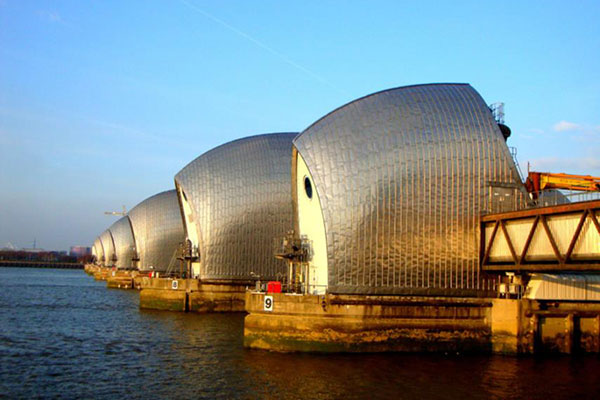
316 grade stainless steel as exterior cladding to Thames Barrier.
Architects can also define in their specs how often the surfaces will have to be cleaned: to maintain them constantly cleaned will help to avoid corrosion.
There are, in addition, different types of coating that can increase the performances of the material and the range of colours that designer can specify: I would mention just as an example PVD coating (Physical Vapour Deposition) which, even if not widely diffused in the architectural field yet, has been demonstrated to be extremely efficient and durable.
Stainless steel as protagonist
Probably as a reaction to the taboo imposed at the time of the University: I can’t help being tempted to list a number of projects that I like where stainless steel is the protagonist:
- Thames Barrier, London, UK (Rendel, Palmer and Tritton for the Greater London Council)
- Paul Klee Centre, Berne, Switzerland, Renzo Piano
- Bergisel Sky Trump, Austria, Zaha Hadid
- Liner Museum, Appenzel, Switzerland, Gigon&Guyer
- Zollhof,Dusseldorf, Germany, Frank O.Gehry
- Cloud Gate, Chicago, USA, Anish Kapoor
- Turning the world upside down, Jerusalem, Anish Kapoor
- The well-tempered chair from Ron Arad
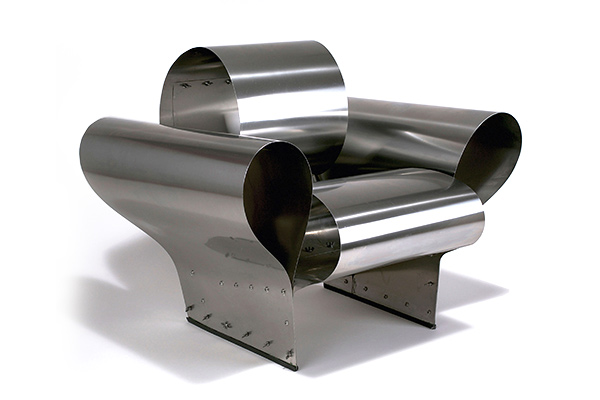
The Well Tempered Chair by Ron Arad, Design: 1986
Manufactured by Vitra AG, Basel. Made from high-grade sheet steel and thumb screws
But like usual I have a preference for something that achieves beauty through its efficiency (beautiful because it works) and as you probably know already there is an object which I would place on the top of the list: the saucepan!
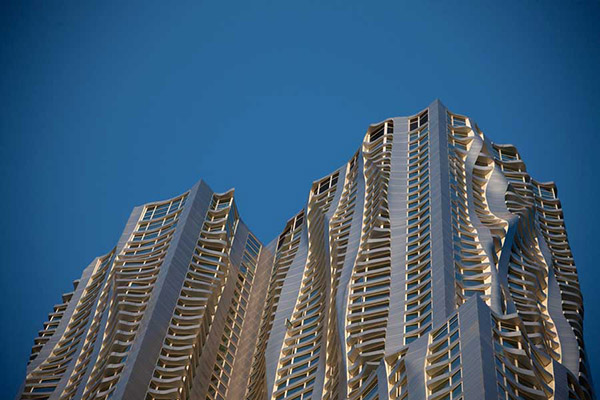
8 Spruce Street aka New York by Frank Gehry. Manhattan, New York.